The southernmost island of Po Toi is a unique place to see prehistoric rock carvings, climb impressive granite slabs, soak in vast seascapes and wander through one of the the territory’s coolest islands.

Visiting Po Toi is best on a clear and cool late autumn or winter day as there is very little shade and lots of walking and climbing. This island of massive rock formations, climb-worthy peaks and stunningly beautiful views is also a popular tourist destination, which means a peaceful trek alone or with a few friends is virtually impossible.
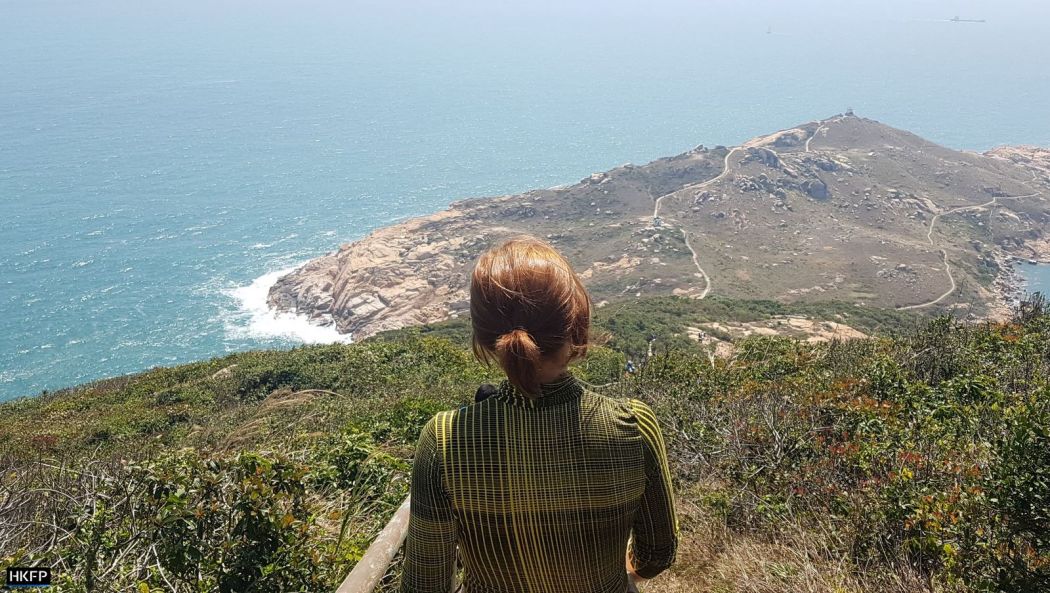
Often there will be a queue waiting for those who pray to the Instagram gods to snap photos, which makes for some frustrating moments. But there’s a reason so many flock to this island, and we are here to tell you it’s worth the (minimal) hassle.
What to know before you go
First and foremost, sturdy shoes with good tread are a must if you plan on doing any of the hikes. You’ll be climbing on rock slabs (which are thankfully not slippery), downhill at times, and the tread will be imperative to maintain your safety. You can do some hikes without seeing the peaks or without walking on the slabs but you’ll miss out on the best views the island has to offer. Be sure to bring plenty of water as there is just one café to buy water when you arrive and not much else.

The island is very bright and sunny with limited shade, so a hat, sunscreen and snacks should also be in your rucksack. Bathrooms are scarce and really disgusting portable outhouses that look like they haven’t been cleaned in months, so bring tissues and an open mind. Also bring an Octopus card with enough money for a round trip on the ferry, as they do not have change and will yell at you if you try to overpay.
How to get to Po Toi
There are ferries from Aberdeen and Stanley, but they don’t run daily and are limited in times, so always check to be sure. The schedule posted in Aberdeen says it runs Tuesdays and Thursdays (excluding public holidays) at 10:00 a.m., Saturdays (excluding holidays) via Stanley at 10:00 a.m. and 3:00 p.m., and Sundays and public holidays via Stanley at 8:15 a.m. There are ferries departing Po Toi only at 3:30 p.m., so get there early as the queue will line up long before. Oddly, there was also a 2:30 p.m. ferry from Po Toi to Aberdeen which we boarded, but it was not listed, so again, it’s best to check.
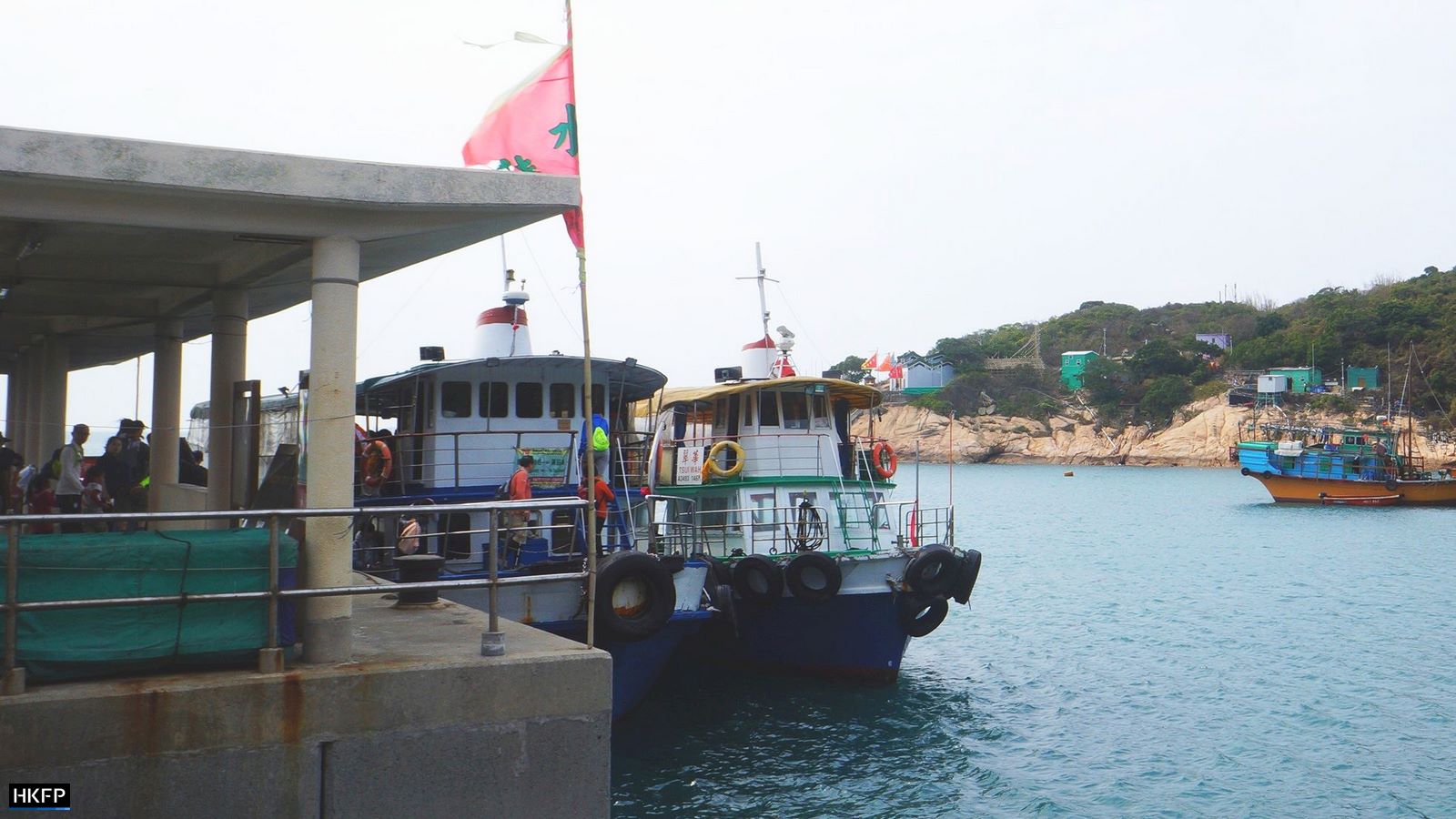
We took the 10:00 a.m. ferry from Aberdeen Promenade. The boat is super-crowded and queues start very early, so best to get there at least 45 minutes ahead of schedule. We got there 30 minutes ahead and were cut off just after the last person boarded, waiting 20 more minutes for another ferry to take the overflow from the first boat. The journey itself takes just under an hour each way.
Po Toi Country Trail
Hikes around Po Toi vary from easy to moderate and take between 2.5 to 3 hours in total (it’s only about 4.5 kilometres long). There are three trails, which are clearly marked on a map located on the pier once you exit the ferry. But we decided to hike the whole island, because the three routes in total are just one big loop around and we wanted to see everything Po Toi had to offer.
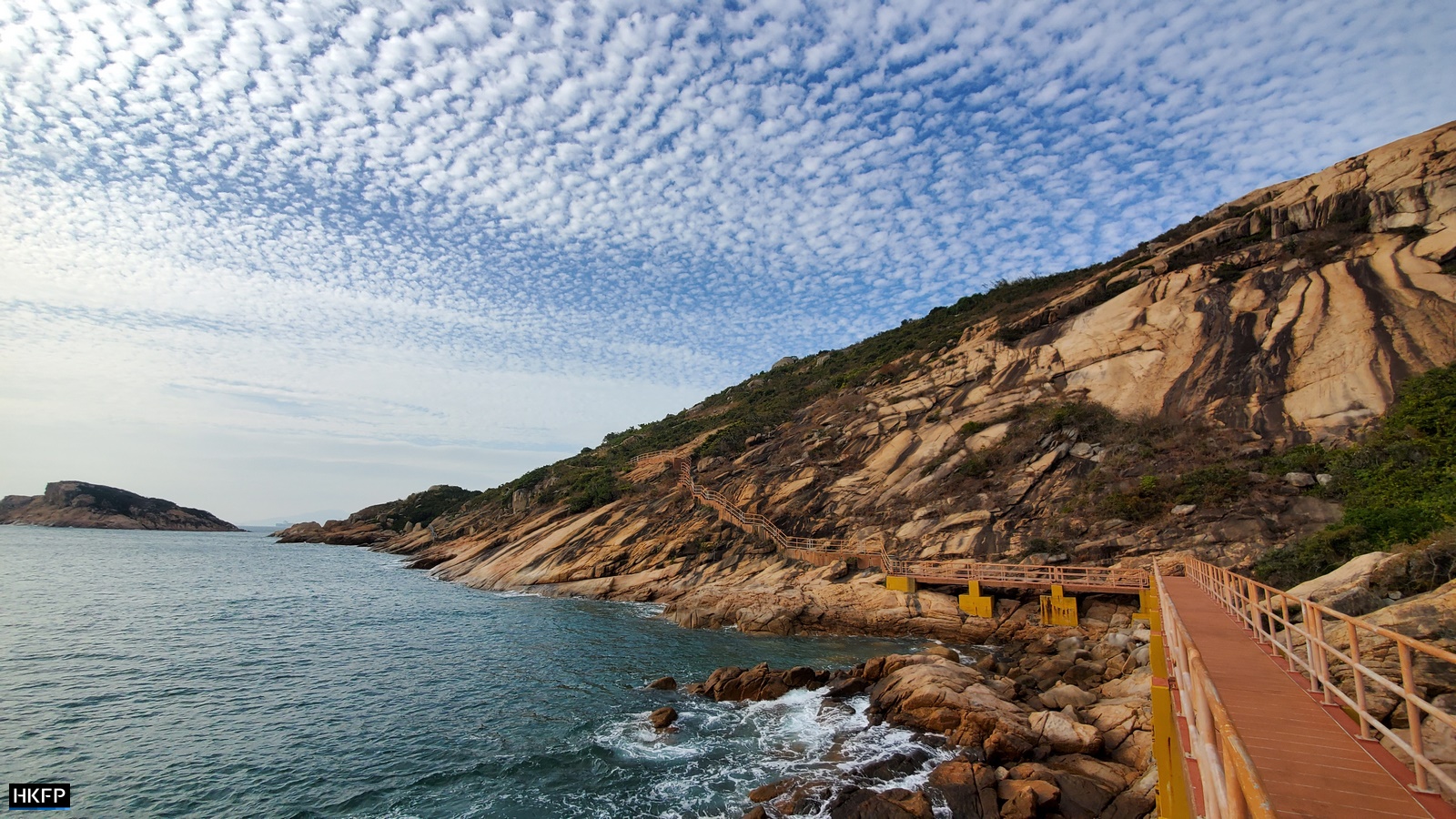
Once off the ferry head straight off the pier and continue past the café through a narrow passageway to the trail. Turn right up the stairs and keep following the path. Continue straight.

Enjoy the first section as it’s one of the few shaded areas you’ll encounter, and soon you’ll come to an open area with a well-constructed walkway and railings just above the shoreline. There is a staircase down to the water if you want to check out the surf and tiny beach. If not, continue straight along the narrow path (this part gets very crowded, so patience is taxed) and eventually you will come to a point where you can go left up the staircase to the pavilion or continue straight toward the Nam Kok Tsui lighthouse and Palm Cliff.
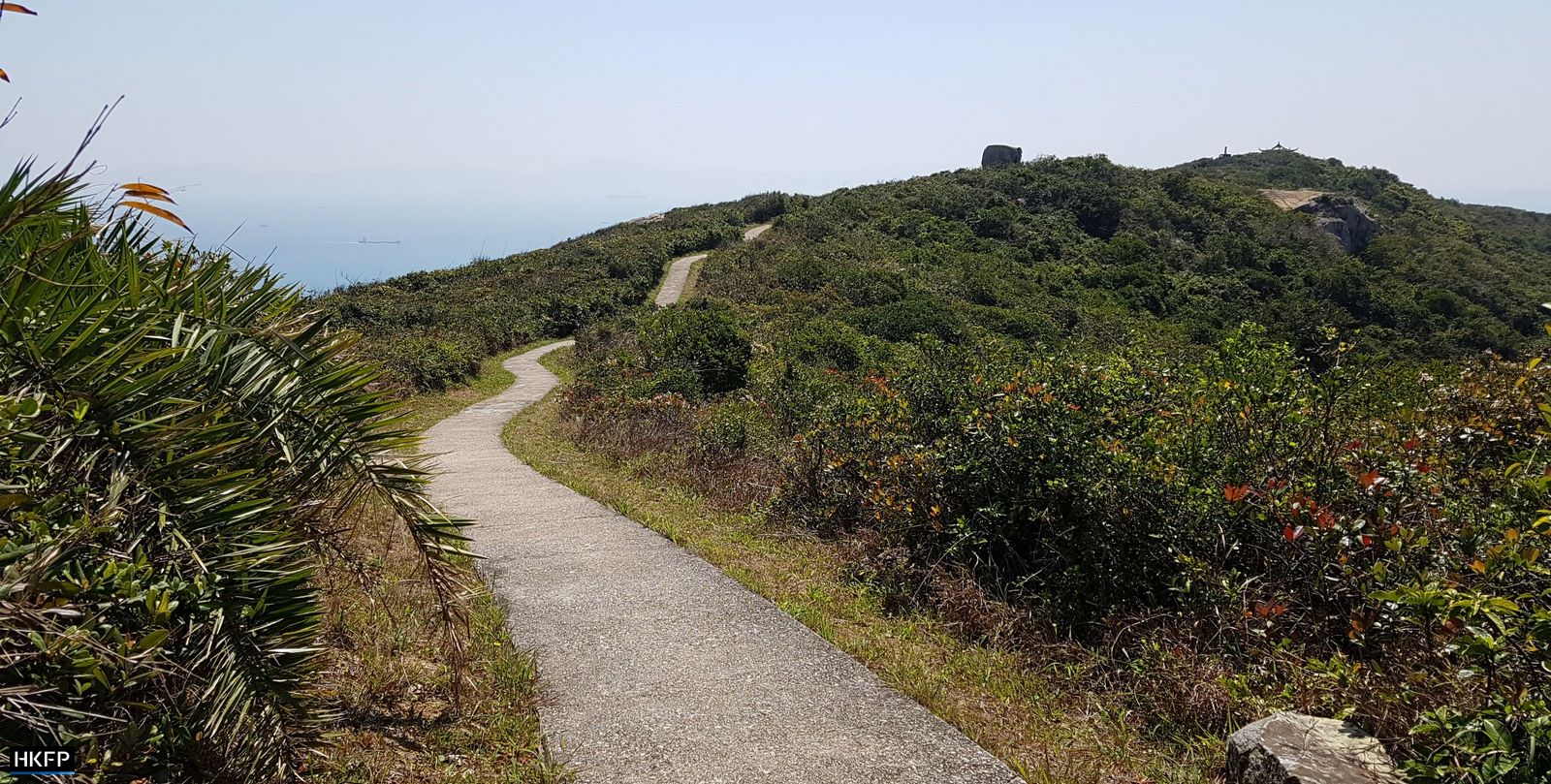
We strongly suggest you see the lighthouse then make your way back to this point, because en route to the lighthouse you will see incredible views and both Turtle Rock and Monk Rock. You can also check out the Palm of Buddha, a hand-shaped rock formation in the cliff, and the 3,000-year-old rock carvings – which weren’t discovered until the 1960s – which are now a “declared monument.” These are at the bottom of the cliff, down a staircase to the shore.

But most of all, you will get the opportunity to scramble over massive granite slabs overlooking the sea at Gold Panning Cliff, which takes a bit of legwork but is one of the most unique experiences you can have in Hong Kong. Take a moment to enjoy the views and soak in the fresh air and make your way back up the steps to the lighthouse again. Keep going back down the steps after Turtle Rock and Monk Rock – they are on either side of the trail – and you’ll see the staircase up to the peak and pavilion in the distance.

Head toward the staircase and be sure you’re well hydrated because it’s close to 1,000 steps to the highest point. There is one outside outhouse here if you need a bathroom break. There is a halfway point after the first 500 steps where you can take a break and enjoy some more views. The final ascent is worth it – be sure to stop a little while and look around – and once there, the climbing is (mostly) over.

After the pavilion the path becomes narrow and straight, leading you to another junction. You can continue down towards the ferry pier or, if you’re ready for more adventure and we hope you are, turn right on the rock path to trail number three, which is about an hour and a half to the ferry pier. When in doubt while on the trail, look for plastic ribbons tied to the bushes which mark the correct way.
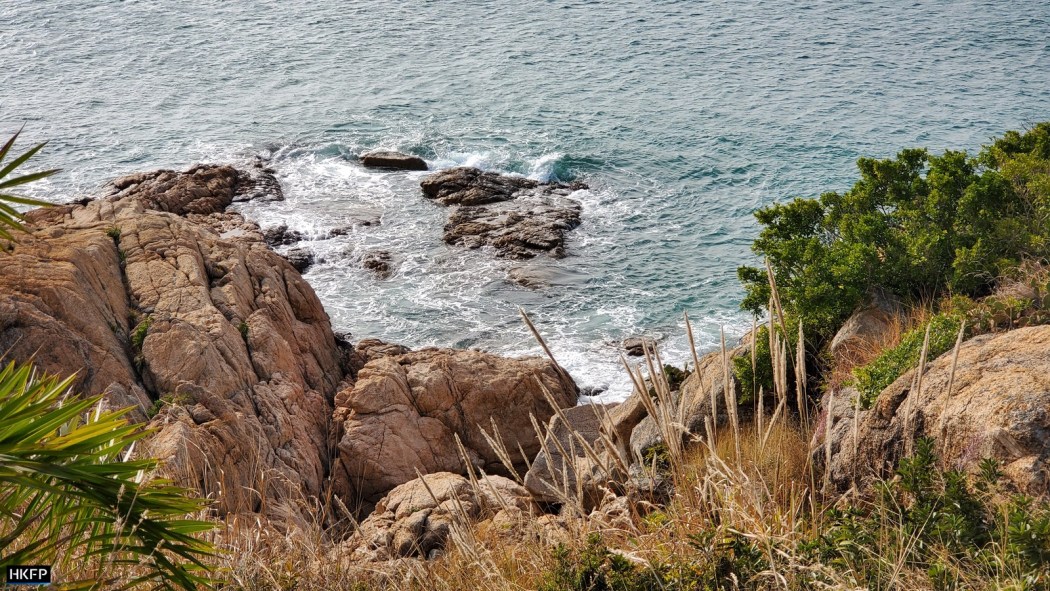
This section was not nearly as crowded, which was a relief. You will be happy your shoes have excellent tread, because you’ll scale a bit of rock at times and be thankful you have them when you head down towards the Tin Hau Temple at the end.
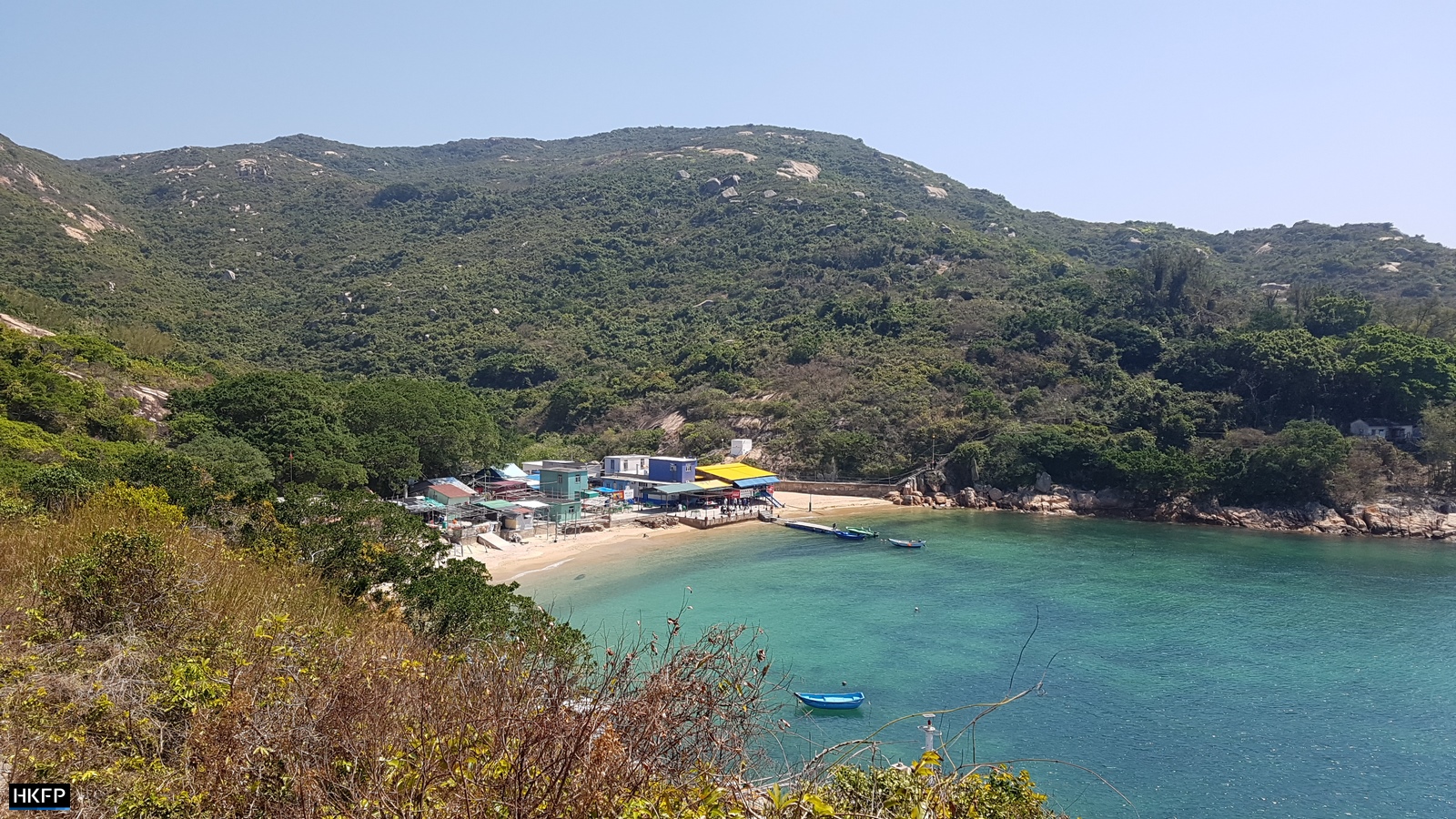
Once over the first bit of rock you come to a shaded area through the trees – there may be a little path marked with a ribbon to your right but don’t go there unless you’re keen to get caught in wicked thorn bushes which seem to have it in for hikers. Go straight until you see another rock formation and again, walk directly over it. You’ll see the ferry pier from the top. At this point you’ll be manoeuvring your way down rocks, a bit of trail and more slabs until you see an area with electrical equipment. Go around that equipment to the left and follow the trail. It will eventually lead you all the way down to the bottom, to the northern shore of Tai Wan, and the Tin Hau Temple will be on your right.

Make sure to visit the temple, as it has a breath-taking sea view, is more than 170 years old and has a small collection of antiques. It also features two bells crafted in 1835 and 1891. Our favourite was the sign saying the front gate was meant simply to keep out the wild boars.
When you’re finished admiring the temple, turn back and toward the restaurant area, around the bend and toward a tea house. Continue past the tea house (to the right) and down the steps to the ferry pier.

Vegans should pack a few hearty snacks as the fare on the island caters mainly to seafood and meat lovers. Keep an eye on the time, as you don’t want to miss the last ferry off the island.
Other sites to see
Ho Haunted Mansion – the Ho family’s deserted mansion, which locals say is haunted because “Coffin Rock” is located behind it. The home is located by following a detour off the main hike. Look for “No trespassing” signs leading you to the abandoned area.
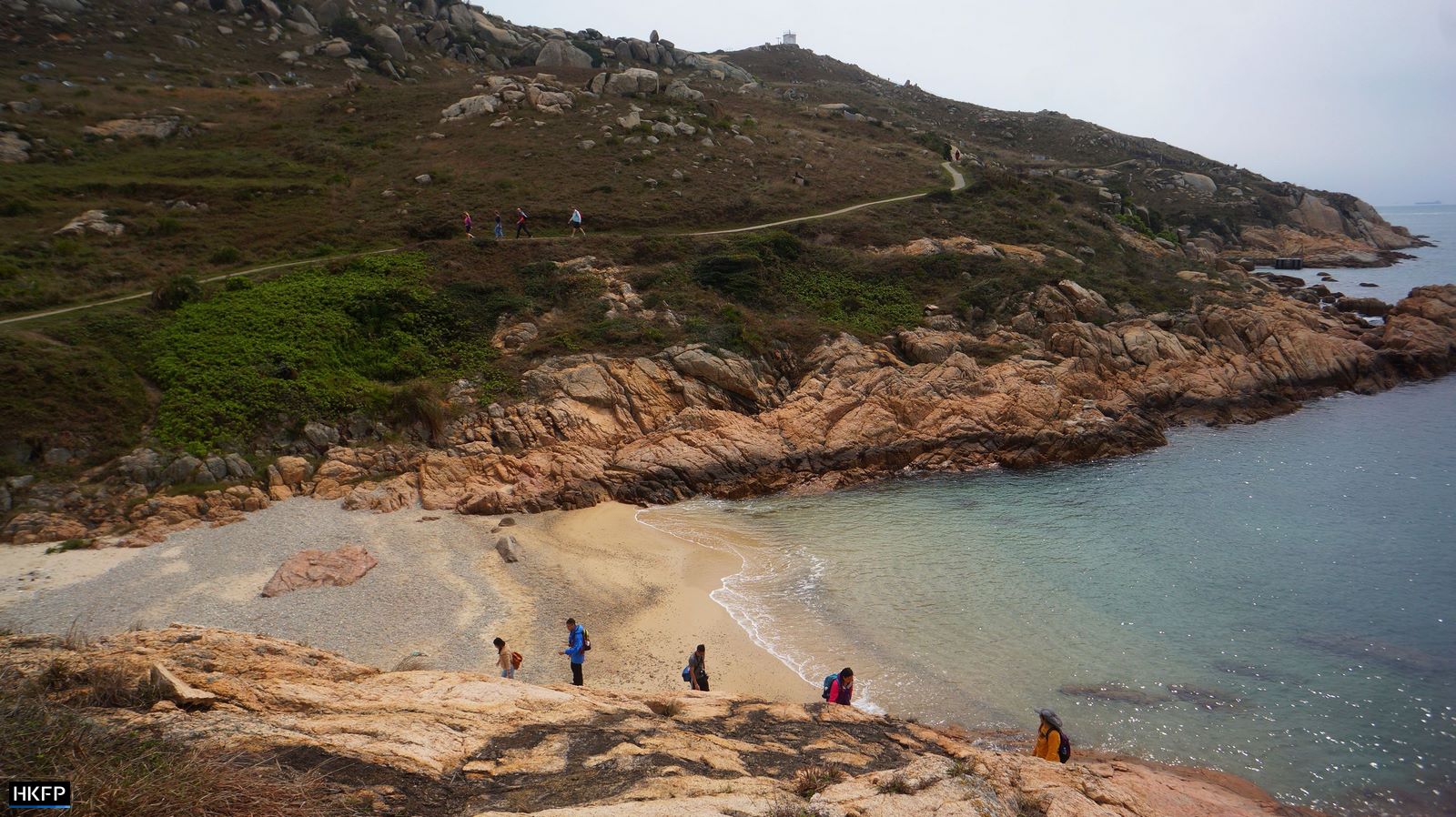
Where to eat
Food options on Po Toi are very limited. The café just off the pier has a restricted menu with outdoor seating featuring dishes including seaweed, luncheon meat, fried egg with noodles, or kelp with green bean sweet soup, red bean sweet soup and seaweed with egg flower soup. It also has a variety of bottled water, soft drinks, beer and teas available.
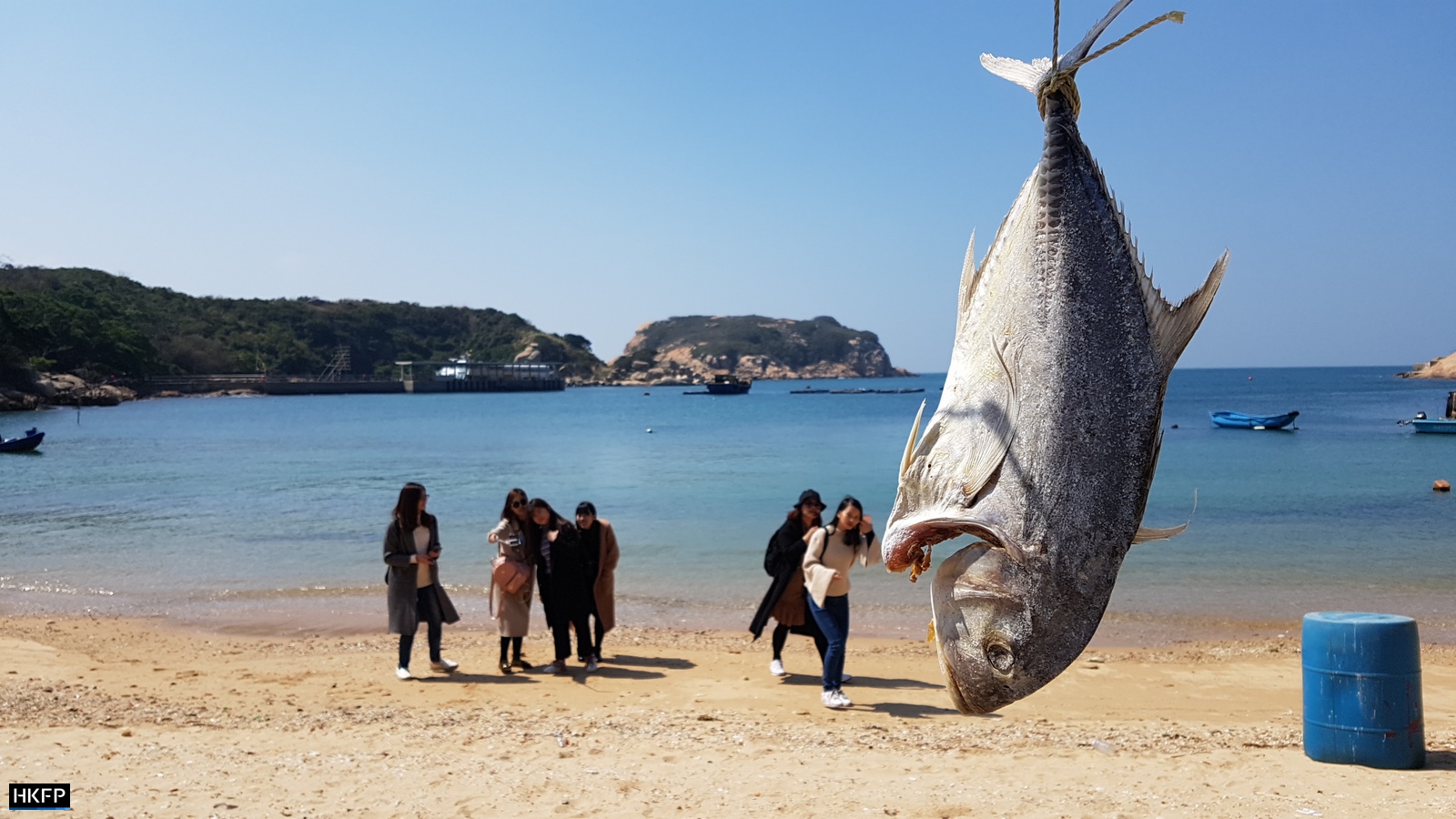
The best-known restaurant, just to the left off the pier and overlooking the water, is Ming Kee Restaurant, (Po Toi Country Trail, 2849 7038). You will walk past it after hiking down section three, to the right of the Tin Hau Temple, on your way back to the pier. It is beloved of locals and tourists alike for its fresh seafood and hearty servings. If you can’t find a spot at Ming Kee, there are a couple of dai pai dongs and a local restaurant nearby that are just as good.
Support HKFP | Policies & Ethics | Error/typo? | Contact Us | Newsletter | Transparency & Annual Report | Apps
Help safeguard press freedom & keep HKFP free for all readers by supporting our team

LATEST FROM HKFP
HKFP has an impartial stance, transparent funding, and balanced coverage guided by an Ethics Code and Corrections Policy.
Support press freedom & help us surpass 1,000 monthly Patrons: 100% independent, governed by an ethics code & not-for-profit.










